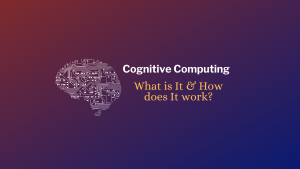An Information Management System (IMS) plays an essential role in the daily activities of almost any business. For example, these systems handle the various data that companies use to inform decision-making, which can ultimately lead to their stability. Because of this, digitized industries dedicate numerous resources to information management systems operation.
An appreciation of these systems can help you better understand how they can be used to improve various workplace operations. The fact is that most organizations collect, generate, and store information about their operations and business. This information can be crucial to their productivity and profitability, so they must secure and manage it safely.
Learning about information lifecycle management may help you better understand how businesses store and access information. Knowing the answer to “What is information lifecycle management?” can help you better understand how a company uses its data to operate the business. Information lifecycle management (ILM) refers to the wholesome process.
The process of overseeing business data to optimize its use and lower a company’s costs. ILM also tries to reduce the compliance and legal risks the data might present so businesses can use the data, metadata, and applications effectively. But all this can sometimes prove tedious without an Information Management System (IMS) to help manage your business data.
Understanding The Information Management System (IMS) Features
An Information Management System (IMS) refers to any framework of software that facilitates the collection, storage, organization, and distribution of information. Information management encompasses organizational activities about acquiring, storing, and distributing information to stakeholders. In this case, information is any detail that allows a business to decide.
For example, the number of sales a business records over a week. The information in question can be in different formats, including pictures, audio, and video. An excellent management system allows data to be accessed in a timely and accurate fashion so that key stakeholders can use it to make informed decisions about the business, in this case, powered ILM.
It begins with creating or recording information and covers usage, maintenance, storage, and retrieval. The last stage of ILM involves disposing of, destroying, or permanently keeping the data. Organizations must manage all their information securely and protected, primarily if they work with personal and confidential information. There are ILM best practices to note.
These best IMS practices include storage optimization and methods to improve data quality, utility, and safety. Different businesses and industries often manage information lifecycles with other processes. It depends on the amount of data an organization collects, the nature of that data, and what the organization hopes to do with it. Below are the core IMS features:
1. Information Gathering
As a business or organization operates, it generates and collects information on a large scale. These entities typically record data daily, and this information can relate to all of their processes. They usually store this information digitally, and data might include information related to inventory, attendance, invoices, transactions, and customer comments and queries.
Businesses seek reliable online and offline sources from which to collect data. While offline sources help them gather data specific to their industry, data from the internet and social media platforms are valuable sources of extensive data. This core feature involves gathering and measuring data on business activities. The data that businesses collect are in four categories.
They are as follows:
- Personal Data: It includes every information that allows a business to identify a customer. This data type includes name, address, and Social Insurance Number (SIN) in specific situations.
- Engagement Data: It details the interaction between a customer and a business through various touch points. For example, the number of visits to a company’s website, email opens, and registered attendees at an event.
- Behavioural Data: This is generally any detail that contains a transaction between a client and a business. Examples include purchase histories and information about product usage.
- Attitudinal Data: This includes metrics such as product desirability, product relevance, and customer satisfaction.
A standard information management system can easily collect, measure, and return these data to stakeholders.
2. Information Storage
As an organization operates, it collects data and generates information on a large scale. Organizations typically record data daily, and this information can relate to all of its processes. They usually store this information digitally, and data might include information related to inventory, attendance, invoices, transactions, and customer comments and queries.
Information storage is a feature that allows the IMS to keep data and make it accessible to users. The system houses this data in a storage unit, either a hard drive or a database server. The system can also store data in cloud storage, accessible online. It allows choosing to store information in the cloud over more traditional ways of storage, like paper or compact disks.
In that case, it allows you to better ensure the information’s safety, quickly recover it if needed, and make it accessible globally. Assigning which data might be helpful in decision-making is an essential aspect of information lifecycle management.
3. Information Processing
Classifying collected data before storing them is crucial. Classification makes it easier to keep, access, and retrieve data. Large companies often manage databases that store information categorically. They may use many processing facilities, making the information more valuable. It’s usually best to keep and classify large data sets in tiers for easier retrieval.
Practically, this also allows for more efficient data management. Information processing is any series of operations that produce results. Typically, this involves manipulating data to create useful information. The data requires information transformation from one format or medium to another. For example, let’s say a business records its total transactions for two days.
On that note, it can compare the first day of transactions with the second to determine whether there was a growth in net sales. Rather than calculate and interpret this data manually, an IMS automates the process and only presents the results. Information processing refers to acquiring, organizing, displaying, and disseminating information.
4. Information Distribution
The longer you collect information, the more of it you compile. As these data can become difficult to sort and store, it’s often beneficial to archive data periodically. This allows organizations to make the information available when needed, ensuring that the latest and most relevant data is easier to access. Organizations are responsible for securely storing data.
More so both real-time and archived information. This makes cybersecurity crucial for information lifecycle management. Cyber attacks, hacks, and data leaks are severe threats from which organizations protect their information and client data. Data management is often expensive, requiring frequent careful assessment to gather and store bulk data to use later.
Organizations can retrieve and analyze this old data to find comparison points and identify patterns. Information distribution refers to all the processes an organization employs to deliver information to its stakeholders, who interact with it differently. Some ensure its quality, accessibility, and utility, while others, like executives, use it for decision-making.
5. Information Accessibility
Information accessibility refers to the ability of an IMS to display data in a way that allows stakeholders to access the content. The content is generally available equally in a company, but this can be adjusted depending on different stakeholder categories. For example, the information available to a senior executive may differ from what a marketer can access.
Even if all the marketers in a department have access to the same information, data becomes obsolete over time for numerous reasons, such as changing policies, adopting new processes, and implementing different strategies. Outdated information can cost organizations significant resources because of data security, processing, and storage expenditures.
Periodic information assessment is beneficial for removing obsolete data. It must be remembered that information is a crucial asset for different businesses because it helps them succeed in competitive markets. Quality information management implementation can positively transform an organization’s data management practices, resulting in significant benefits.
How Information Management System (IMS) Simplifies Business Data
Simply put, the management information system provides feedback to managers themselves about their performances. With the help of this system, top management can supervise the whole company. This system compares the “actual” results with the planned outcomes and the data results of the previous year. In this way, it is helpful to measure the company’s progress.
More so compared to yester year’s performance and targeted goal. A management information system collects data from different company units and functions. However, some data is collected through connected computer counters, and remailing data may be entered into the system periodically. Reports are generated at intervals and can be obtained on demand.
While primarily using a built-in query language. For example, a human resource management system allows business managers to control the flow of information all around the organization. Managers use electronic devices to seamlessly interact with managers of other departments and their employees or even for employees to communicate with each other.
They are all part of the office automation information system. The media devices comprise cell phones, landline phones, multimedia, intranet, internet, email, voice mail, video conferencing, and file sharing. Overall, the human resource management systems keep track of employees and their recruitment. It also does the daily management tasks of business employees.
The main advantages are that the system;
- Provides an inclusive picture of an organization.
- Enhances the operational productivity of an organization.
- Adds value to the existing products and motivates innovation.
- Improves product development and assists the manager in making better decisions.
- Reports like employee performance records and annual revenue help evaluate assets and limitations.
- Enhances the organization-based methods and operations by identifying the fundamental facets.
- Assists as a communication channel and planning tool for seamless team integration in the workplace.
- Customer data report helps plan better and more effective marketing strategies and promotional activities.
- Management information system helps an organization achieve a competitive advantage.
- It helps in effective decision-making, thereby reducing the time for actionable items.
Additionally, in terms of decision-making, an Information Management System (IMS) allows various stakeholders to have comprehensive business information which they can use to make decisions about their departments. Not forgetting, when decisions are well-informed, it is easier to identify improvement areas in the daily organization and business operations.
Different teams can then focus on these improvement areas, which may increase their productivity and improve the services they deliver to clients. Equally important, proper information processing can help stakeholders better understand business goals and identify areas or opportunities where the business can improve — helping to achieve the primary business goals.
Getting To Know The Management Information System (MIS) Evolution
To enumerate, a Management Information System (MIS) is a data-driven field focusing on organizing businesses’ data, analyzing it, and using it to inform decisions. An MIS produces regular reports for every management level, so their complexity can depend on the company’s size. This system can coordinate, control, analyze, and visualize real-time information.
For example, MIS helps improve report generation efficiency and stores it in an accessible manner. MIS studies typically encompass people, processes, and technology within an organizational context. MIS experts help realize maximum benefit from investment in personnel, equipment, and business processes. Management Information System is a people-oriented field.
The field has an emphasis on service through technology. Organizations can optimize their processes after quantifying and comparing their performance to their plans. Monitoring related processes allows companies to understand the time required to complete specific tasks and measure the success or failure rates. For instance, consider an e-commerce business.
It may gain valuable information regarding the average time a customer spends on its website, the volume of transactions over a period, and the time taken per transaction. With that in mind, it’s essential to realize that management information systems have evolved through different phases while helping drive better information and data management results.
Mainframes & Minicomputers
Mainframes were large computers that allowed organizations to perform processes requiring large volumes of data processing. They occupied entire rooms, relied on punch cards, and had operators who manually delivered reports of processed data to those requesting them. It’s the introduction of minicomputers that replaced punch card operations with data entry through a computer terminal. This also allowed larger businesses to operate computing centers on-premises.
Personal Computers & Networks
With the development of personal computers, businesses could have MIS-dedicated employees. While this was a cheap and efficient process, it required that the information needed for reports be present on each computer as each computer couldn’t connect with others. With increased technological complexity, employees wanted to share information amongst themselves quickly and efficiently. That being said, both the client-end and server-end networks solved this by enabling multiple computers to connect to a shared network as a server while transferring data.
Enterprise & Cloud Computing
On the one hand, the main features of the enterprise computing era were high-speed networks and the consolidation of information from various departments into software platforms. These software platforms or enterprise software made it easy for computers to gain access to all of a company’s servers, further refining the information generation process. On the other hand, cloud computing is the accessibility of different services through the internet. It allows users not present on an organization’s premises or directly connected to its private network to access its servers.
The Most Common Management Information System (MIS) Types
As you can see, a management information system is an advanced system to manage a company’s or an institution’s information system. It is a computerized database to organize and program so that it generates methodical reports for each company level. The management information system can quickly and easily obtain data performance reports for special events.
Different businesses and industries often manage information lifecycles with other processes. It depends on the amount of data an organization collects, the nature of that data, and what the organization hopes to do with it. It’s possible to classify ILM into the critical phases of data (collection, creation, classification, archiving, security, disposal, and assignment).
Information lifecycle management is essential for organizations that handle large quantities of data. Media companies, banks, tech firms, and insurance companies rely heavily on ILM and IMS to manage their data. Information is crucial for businesses because it helps them succeed in competitive markets. ILM implementation can positively transform a business.
It can also help provide the best practices for data and management of any given organization, resulting in significant benefits. There are various types of management information systems, the most common of which are: common:
1. Accounting Information Systems
By all means, an accounting and finance information system collects, stores, and processes financial and accounting data for use by decision-makers. Technically, an AIS uses computer science, auditing, accounting, and marketing theories and practices. Also, it helps ensure the accuracy of financial transactions while providing this information to concerned stakeholders.
These systems track the investments and assets of a company. The data collected from these reports are assembled for financial reporting demanded by law to deal with functions like federal, payroll, local taxes, and state and pension funds. This system generates reports required for regular financial audits and annual reports for upper management and senior managers.
The system process typically covers these steps:
- Collects information about an organization’s financial activity and stores it.
- Supplies this information to decision-makers and prepares financial statements and managerial reports.
- Ensures the security of this data and makes it easy to process and record.
The accounting and finance system also assists in the daily posting of regular transactions like sales income, bank deposits, transfers, and returns. All the monthly and annual statements, like profit and loss statements and balance sheets, are produced from this system. These statements are crucial for middle and upper managers to know about the company’s performance.
They help them to track and compare the current financial status with the past financial situation of the company and pre-decided goals for future growth. Similarly, a company’s inventory includes spoilage, sales, theft, and stock (on hand). For such and other reasons, the inventory control system tracks all these things and updates management about them.
2. Decision Support Systems
Similarly, a decision support system primarily supports an organization’s decision-making by analyzing vast data. The categories of data include sales figures, projected revenue, or other operations-related information like labor statistics. A DSS can either operate fully automated or manually by humans. Decision-making is the responsibility of senior executives.
Coupled with higher management, they typically use a company’s DSS. The organizational information system is designed in such a way that it assists an executive manager in managing executives. This system provides information in tables and charts, making it easy for managers to analyze and make essential decisions. They help managers when a situation arises.
It gathers data from both external as well as internal sources. Population trends, interest rates, and the cost of new house construction are a few examples of external sources. In contrast, internal data sources include manufacturer, sales, inventory, or financial data. For instance, managers can consider external and internal factors while setting annual sales quotas.
3. Marketing Information Systems
Markedly, a marketing information system collects, processes, and distributes data about an organization’s marketing activities. This information can be from within the organization or external competitors, which stakeholders use to inform marketing decisions. Marketing information systems can also monitor the degree of marketing success.
As such, marketing directors and business executives can determine the profitability of marketing operations. This system can also work with other data management systems to help businesses understand their operating conditions and environment. The work of a transaction processing system is to collect and process data produced during routine activities.
The activities are like orders, payments, deposits, or reservations. This system also helps the management to execute and track the efficiency of a company’s marketing functions and sales. These reports tell that the sales of which product is maximum and which products are not doing good in different retail stores of the company. Helping make better and informed decisions.
4. Human Resource Management Systems
Notably, human resource management is a term that describes an organization’s approach to productively managing employees. Be that as it may, a Human Resource Management System (HRMS) is a software suite that monitors HR management and related processes throughout the lifecycle of the employees. HR leaders and staff are the primary system users.
And they generally use them to comply with labor regulations and tax laws. An HRMS allows a business to fully understand its workforce and workforce operations through regular performance reports. In this category, we can also consider the expert system. It is designed in such a way that it takes and stores the knowledge of a human expert on a particular subject.
And then it uses that knowledge to assist people with lower expertise in making decisions. It’s worth mentioning that with the advent of new technological innovations, Artificial Intelligence (AI) is an integral part of an expert system. An expert system senses your actions based on your past efforts in similar situations and makes decisions based on those logical assumptions.
5. School Information Management System
Lastly, a School Information Management System (SIMS) enables a school to run the day-to-day activities of a school efficiently. A majority of schools are already adopting this technology to shape the minds of youngsters as well as tackle all behind the scene activities of a school. The school information system has reduced the work of updating and managing students.
Especially the attendance registers. The school information management system smoothly performs this activity and saves teachers time for other productive activities. Similarly, local databases are also an example of management information system types. One thing is for sure; local databases provide in-depth information about the communities living across the country.
These databases take information from available business listings, public data, integrated local service offerings, and social survey input. We can also include the process control systems in this category as well. It helps monitor physical or industrial business processes like automobile assembly, petroleum, or metal fabrication. It gathers data continuously and then reports.
Summary Thoughts:
Typically, businesses use various systems at all levels of operation to collect, process, and store data. Management aggregates and disseminates this data in the form of information needed to carry out the daily operations of a business. Everyone who works in the industry, from someone who pays the bills to who makes employment decisions, uses information systems.
For instance, a car dealership could use a computer database to track which products sell best. At the same time, a retail store might use a computer-based information system to sell products over the Internet. Many (if not most) businesses align Management Information Systems (MISs) with business goals to achieve a competitive advantage over industry competitors.
Resource Reference: What Is Information Lifecycle Management (ILM)? (With Topmost Strategies)
MIS professionals create information systems for data management (i.e., storing, searching, and analyzing data). In addition, they manage various information systems to meet the needs of managers, staff, and customers. They can play a crucial business role by working collaboratively with multiple members of their work group and with their customers and clients.
Particularly in areas such as information security, integration, and exchange. As an MIS major, you will learn to innovative design, implement, and use business information systems to increase your company’s effectiveness and efficiency. Management Information System Majors usually have one of the highest starting salaries of all undergraduate degree programs.







